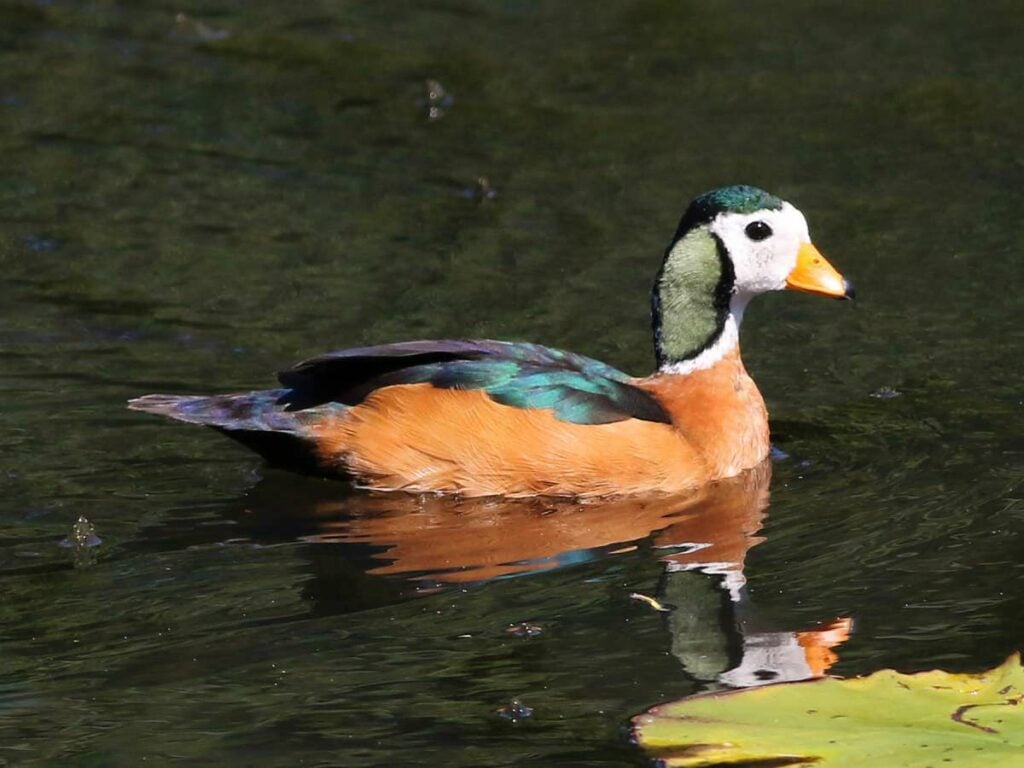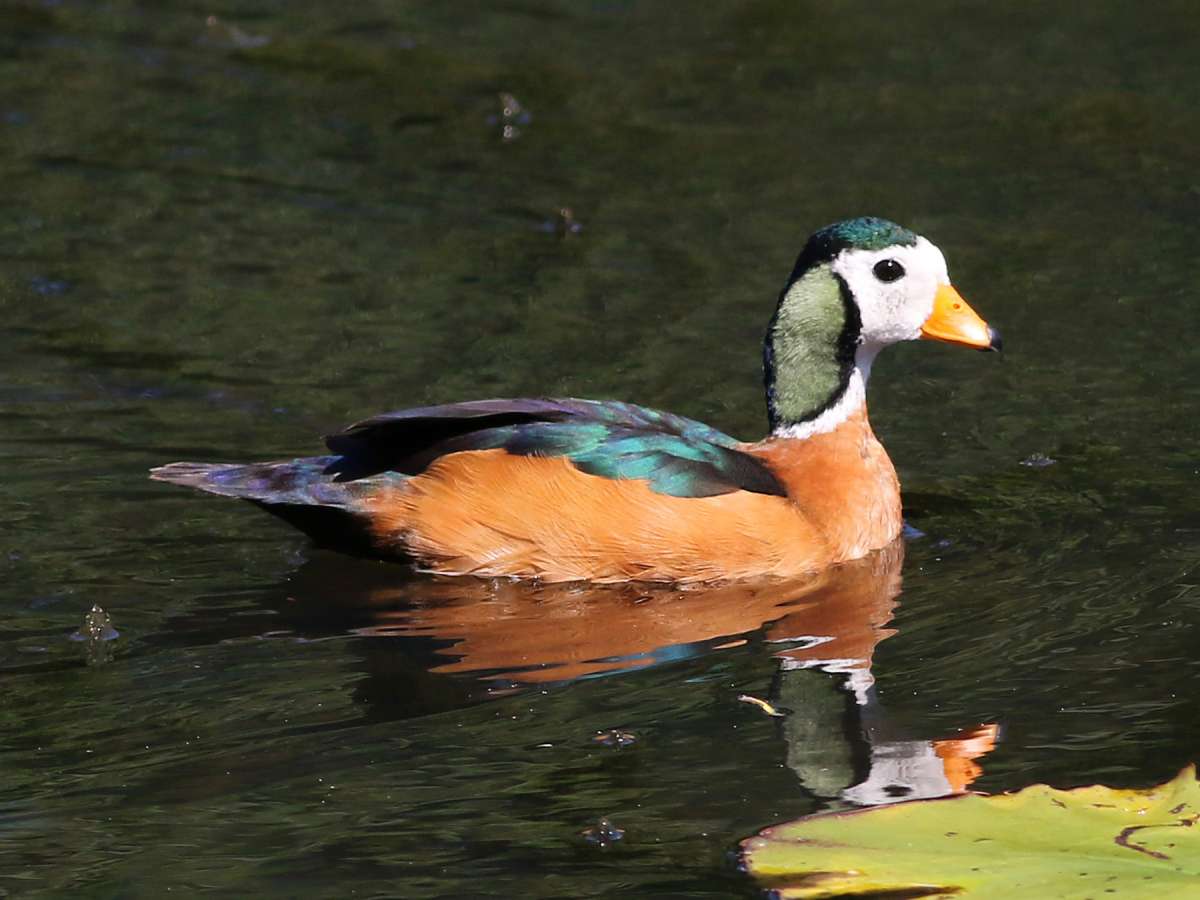
The African pygmy goose (Nettapus auritus) is a small species of waterfowl found in sub-Saharan Africa. It is one of the smallest ducks in the world. These geese inhabit wetlands, lakes, ponds, and slow-flowing rivers with abundant vegetation. They are often found in densely vegetated areas and prefer habitats with floating vegetation for nesting.
Some key features of the African pygmy goose:
Size: Adults are relatively small, with a length of about 25 to 26 centimeters (10 to 11 inches) and a wingspan of around 43 to 46 centimeters (17 to 18 inches).
Appearance: The African pygmy goose has a distinctive appearance with its striking black and white facial markings. Males typically have brighter and more colorful plumage compared to females. They have a chestnut-colored cap on the back of their heads, and their eyes are surrounded by a white patch.
Habitat: They are commonly found in various wetland habitats, including lakes, ponds, rivers, and marshes. They prefer areas with abundant aquatic vegetation.
Behavior: African pygmy geese are known for their secretive behavior and are often concealed within vegetation. They feed on a diet that includes seeds, fruits, and aquatic plants.
Breeding: These geese build nests in submerged vegetation, usually laying a clutch of 6-12 eggs. The female is primarily responsible for incubating the eggs, while the male stands guard.
The African pygmy goose is a fascinating species that contributes to the biodiversity of African wetlands. It is important to note that the conservation status of specific populations of these geese may vary, and threats to their habitats can impact their overall numbers.

